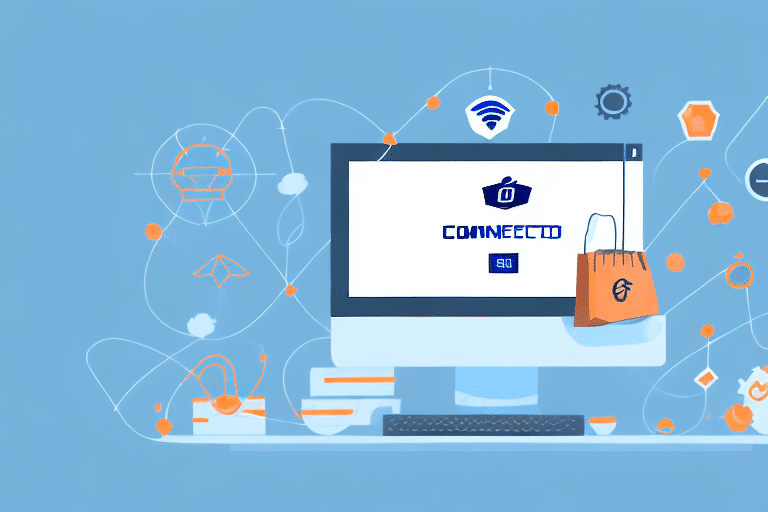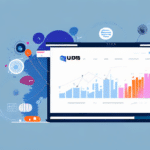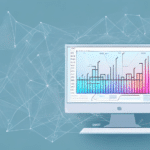How to Connect, Optimize, and Manage UDS for Shopify Plus
As an online store owner, it's crucial to maximize your customer experience. One way to achieve this is by leveraging the power of UDS, or User Data Storage. UDS allows you to personalize the customer journey by storing user data and serving dynamic content based on the user's past behavior. In this article, we'll dive into the importance of UDS, how to connect it to your Shopify Plus Store, and tips for optimizing and managing it.
Understanding the Importance of UDS for Shopify Plus
UDS is a powerful tool that can help you increase sales and improve customer satisfaction. By utilizing UDS, you can personalize your web content, emails, and promotions to create a better experience for your customers. This personalization can lead to higher conversion rates, more repeat customers, and lower cart abandonment rates. According to a [Shopify study](https://www.shopify.com/blog/personalization), personalized experiences can boost sales by up to 15%. UDS can also help you segment your customers and create targeted marketing campaigns based on their interests and past behavior. This makes your marketing efforts more efficient and effective.
Another benefit of UDS is that it allows you to track customer behavior and preferences. This data can be used to make informed decisions about product offerings, pricing, and promotions. By understanding what your customers want and need, you can tailor your business strategy to better meet their expectations.
UDS can also help you identify areas for improvement in your business. By analyzing customer data, you may discover patterns or trends that indicate issues with your website, customer service, or product offerings. This information can be used to make changes that will improve the overall customer experience and increase customer loyalty.
How to Connect UDS to Your Shopify Plus Store
Connecting UDS to your Shopify Plus Store is a straightforward process. Shopify Plus offers robust APIs and integrations that support UDS, so all you need to do is sign up for a reputable UDS provider and follow their setup instructions. Once you've connected UDS, you can start tracking user data and serving personalized content. It's important to note that UDS requires some technical knowledge and maintenance, so it's a good idea to work with a Shopify Plus expert or UDS provider to ensure it's set up correctly.
One of the benefits of using UDS with your Shopify Plus store is the ability to create targeted marketing campaigns. With UDS, you can segment your audience based on their behavior and preferences, and then create personalized marketing messages that resonate with each segment. This can lead to higher conversion rates and increased customer loyalty.
Another advantage of using UDS is the ability to optimize your website for each individual user. By tracking user behavior, UDS can identify areas of your website that are causing friction or confusion, and then make recommendations for improvements. This can lead to a better user experience and increased customer satisfaction.
Step-by-Step Guide to Optimizing UDS on Your Shopify Plus Store
Once you've connected UDS to your Shopify Plus Store, it's time to optimize it for maximum effectiveness. Here are some key steps to follow:
- Define your customer segments: Determine which segments you want to target with personalized content. This could include customers who have previously purchased, customers who abandoned their cart, or customers who have shown interest in a specific product category.
- Create personalized content: Use UDS to serve personalized content to each segment. This could include personalized product recommendations, targeted promotions, or customized landing pages.
- Analyze your results: Use analytics tools to track the performance of your personalized content. This will allow you to identify which segments are responding well and which content is driving the most conversions.
- Iterate and improve: Use your analytics data to continuously improve and refine your personalized content. This will help you increase conversions and provide a better experience for your customers.
It's important to note that UDS is not a one-size-fits-all solution. You should tailor your approach to your specific business needs and customer base. For example, if you have a high volume of repeat customers, you may want to focus on personalized recommendations based on their purchase history. On the other hand, if you have a lot of first-time visitors, you may want to focus on customized landing pages to introduce them to your brand and products. By understanding your customers and their needs, you can create a more effective UDS strategy.
Common Mistakes to Avoid When Optimizing UDS on Your Shopify Plus Store
While UDS can be a powerful tool, there are some common mistakes that can hinder its effectiveness. Here are some mistakes to avoid:
- Not defining your customer segments: Without clear segment definitions, your personalized content may not be effective.
- Overpersonalizing: It's important to strike a balance between personalization and privacy. Don't make your customers feel uncomfortable or stalked by using too much personal information.
- Forgetting about mobile optimization: With more and more customers shopping on mobile devices, it's crucial to make sure your personalized content is optimized for mobile.
- Not analyzing your results: You won't know if your UDS efforts are effective unless you analyze your results. Make sure to track your analytics and use them to improve your strategy.
Another common mistake to avoid when optimizing UDS on your Shopify Plus store is not updating your personalized content regularly. Your customers' preferences and behaviors can change over time, so it's important to keep your UDS strategy up-to-date. Make sure to regularly review and update your customer segments, as well as the personalized content you're delivering to them. This will help ensure that your UDS efforts remain effective and relevant to your customers.
How to Manage UDS on Your Shopify Plus Store: Tips and Tricks
Managing UDS requires ongoing maintenance and optimization. Here are some tips and tricks for managing UDS on your Shopify Plus Store:
- Work with a UDS provider: A UDS provider can help you set up and maintain your UDS system, saving you time and ensuring it's set up correctly.
- Regularly audit your UDS strategy: Review your UDS strategy on a regular basis to ensure it's still effective and meeting your goals.
- Continuously optimize: Use your analytics data to continuously improve and refine your personalized content and customer segments.
- Keep up with best practices: Stay up-to-date with the latest UDS best practices to ensure you're using it to its full potential.
Best Practices for Using UDS on Your Shopify Plus Store
Here are some best practices to follow when using UDS on your Shopify Plus Store:
- Use clear and concise language when asking for user data: Be upfront about what data you're collecting and how you'll be using it.
- Respect user privacy: Use customer data only for its intended purpose and ensure it's stored securely.
- Test and iterate: Test different personalized content and customer segments to see what works best for your business.
- Integrate with third-party tools: Integrate your UDS system with other marketing automation tools for even more personalized experiences.
How UDS Can Improve the Customer Experience on Your Shopify Plus Store
UDS can have a significant impact on the customer experience on your Shopify Plus Store. By serving personalized content, customers are more likely to engage with your store, find what they're looking for, and make a purchase. UDS can also help you create a sense of brand loyalty by tailoring promotions and content to each customer's individual interests and behavior. Overall, UDS helps create a more customized and enjoyable shopping experience for your customers.
Using Analytics to Track the Performance of Your UDS on Shopify Plus
Analytics tools are essential for tracking the performance of your UDS efforts. Here are some key metrics to track:
- Conversion rate of personalized content: Track how many customers convert after engaging with personalized content.
- Segment engagement: Measure how often different customer segments interact with your personalized content.
- Cart abandonment rate: Measure the rate at which customers abandon their cart and see if personalized content can help reduce this rate.
- Lifetime value: Use UDS to improve customer retention and increase lifetime value.
Integrating Third-Party Tools with UDS on Your Shopify Plus Store
Integrating UDS with third-party tools can help take your personalization efforts to the next level. Here are some tools to consider integrating:
- Email marketing tools: Use customer data to create personalized email campaigns.
- Social media tools: Use customer data to personalize social media ads and content.
- CRM tools: Use UDS data to create targeted marketing campaigns and improve customer retention.
- Product recommendation engines: Use machine learning to recommend personalized products for each customer.
Scaling Up: Managing Multiple Stores with UDS on Shopify Plus
If you have multiple stores on Shopify Plus, managing UDS can become more complex. Here are some tips for scaling up:
- Use a centralized UDS provider: Work with a UDS provider that can manage UDS for all of your stores in one place.
- Standardize UDS across all stores: Use the same UDS provider and setup for all of your stores to ensure consistent data and personalization.
- Stay organized: Keep track of UDS setup and maintenance for each store to ensure nothing is missed.
Troubleshooting Common Issues with UDS on Your Shopify Plus Store
Here are some common issues you may encounter with UDS on your Shopify Plus Store:
- Data accuracy: Ensure your UDS system is accurately capturing and storing customer data.
- Personalization quality: Test and iterate to ensure your personalized content is relevant and effective.
- Technical issues: Work with a Shopify Plus expert or UDS provider to resolve any technical issues with your UDS system.
Future of UDS: What You Can Expect for Your Shopify Plus Store
UDS is a rapidly evolving technology that promises to become even more powerful in the future. Here are some possible future developments:
- More advanced machine learning: Machine learning can help UDS become even more accurate and personalized.
- Increased focus on privacy: With increased regulations around data privacy, UDS providers will need to provide even more transparency and control to users.
- Greater integration with other marketing tools: As UDS becomes even more central to marketing success, it's likely that it will become even more integrated with other marketing automation tools.
Overall, UDS is a powerful tool that can help you create a more personalized and effective customer experience on your Shopify Plus Store. By following best practices, continuously optimizing, and integrating with other marketing tools, you can take your UDS efforts to the next level.




















